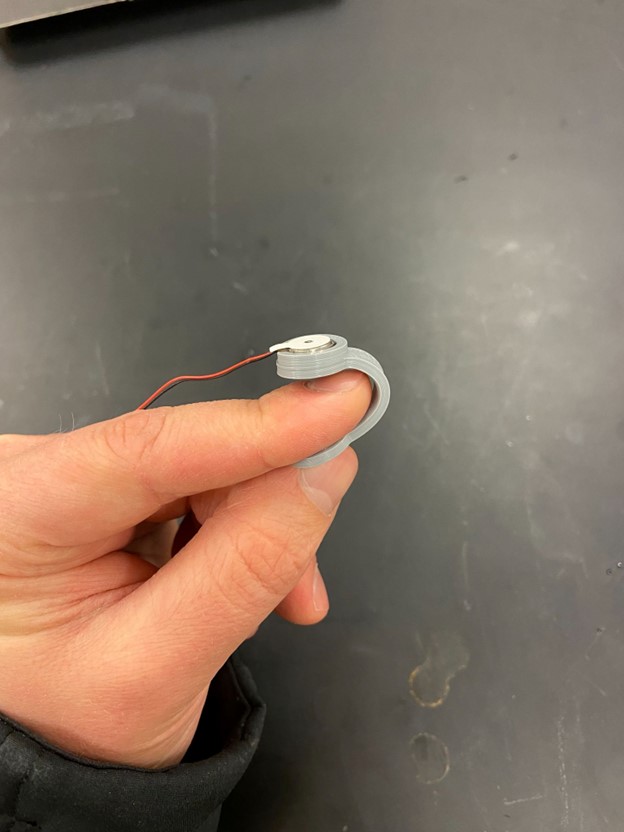Vibrotactile Glove Models
My task for my Embedded Software Engineer student position was to develop functional vibrotactile gloves for use by Parkinson’s patients and stroke victims in clinical trials. The goal was to study the efficacy of vibrotactile stimulation as an aid for rehabilitation and treatment. Current research seems to indicate targeted stimulation to the fingertips yields optimal results, so I began the design by developing and manufacturing “clips” for the ends of each finger. Each includes a well, located on the backside of the finger for the vibratory motor. These clips act as a medium to carry the vibration without impeding the use of the wearer’s fingers. Each clip is secured internally to the glove and then wired to an Arduino unit where the motors can be easily customized to provide different patterns and frequencies of vibration using the Arduino Integrated Development Environment (IDE).
As stated previously, an important aspect of this design was to make the glove as user-friendly as possible. Knowing the patients would need to wear this while performing exercises, therapy, and routine daily tasks, I chose athletic gloves for their light-weight breathable material on the dorsal-side of the hand and their grip material on the palmar side. I also added smartphone-friendly adhesive strips to the tips of the index finger and thumb to allow for and encourage the use of that hand while the patient is performing actions on their phone. Finally, I designed a water-resistant glove model (white glove) by sealing the fingertip-motors and adding stainless steel thread to connect the motors to a water-resistant Arduino unit. The intention of this model was to maximize the number of daily tasks the patient can perform while wearing the glove without concern of accidental spillage or partial submersion of the hand.
The final project I chose for my IOT course was to develop my own RC car utilizing an Arduino unit, four motors to power the wheels, four LED bulbs to function as the "headlights" and "brake lights", and a portable power bank. All components were connected to a smartphone via Bluetooth for operation. The user was able to turn on and off the headlights and brake lights independently, move the car forward, reverse, and turn.







